Ultra-trail, Triathlon, Marathon, High Mountaineering… ESSEC’s Extreme Athletes
Business school graduates have a thirst for performance...and some more than others! We look at 10 sporting alumni who have taken up an extraordinary challenge.
Thomas Ostré (EXEC M21), a devoted triathlete
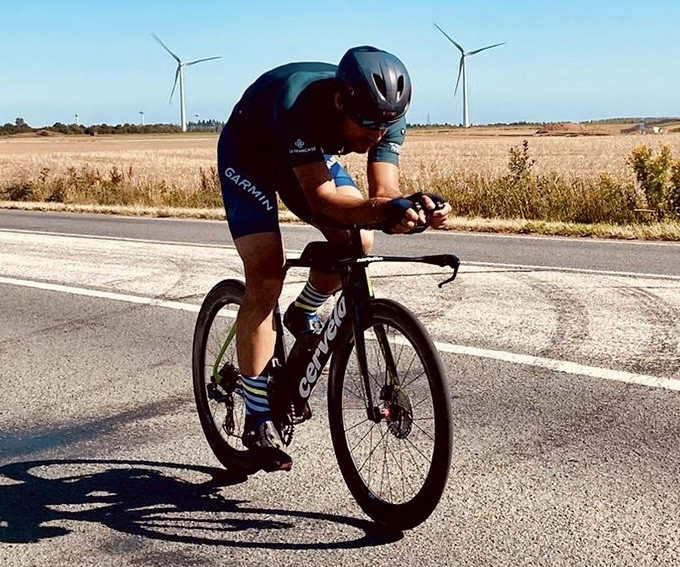
Thomas Ostré has some iconic triathlons under his belt, including several Ironman events and Norseman in Norway. “During this daunting and difficult challenge, you set off for a 3.8km swim in a fjord at 12°C, followed by 180km by bicycle with uphill climbs of more than 3,000 metres, and you finish with a 42.195km marathon with the last third at the top of the Gaustatoppen. After 12 hours and 44 minutes of effort, I came in 46th in the overall ranking, 40th for men and 1st amateur Frenchman.”
Yet this is not the most difficult challenge he has set himself. “I recently took part in the Enduroman, also known as the ‘Arch to Arc’, which consists in getting from London’s Marble Arch to the Arc de Triomphe in Paris in the fastest time possible.” The race thus involved 140km on foot from London to Dover, a 45km swim across the Channel, and a 300km cycle from Calais to Paris. “More than 8,000 people have climbed Everest, nearly 100 have gone into space...but only 52 people have managed to finish this race!” Thomas Ostré is one of them. “I failed my first attempt after fifteen-and-half hours of running, and especially 6 hours in the Channel, where sea-sickness caused me to vomit constantly while swimming...but I tried again three weeks later and this time I made it, despite a tendonitis in my heel.” To cap it all, he is also the world record holder for the cycling stage, which he finished in 11 hours and 40 minutes.
Thomas considers this as a collective feat. “Triathlon may seem like an individual sport, but it actually relies on a team. When you cross the Channel, you’re followed by a boat, and I can assure you that you are fully aware of its importance! I also had a coach and medical team to help me prepare, and partners for the logistics. Not to mention the unfailing support of my family and friends. This team aspect is really important for me. When I was young, I played goalkeeper in ice hockey, so an individual role at the service of a group.” Thomas sees a similarity with management. “In sport and in business, I consider mutual help, trust, communication and sharing to be key assets for each person’s empowerment. With a good team at your side, everything is possible.”
Florence Chevallier (E07) at the summit of Kilimanjaro
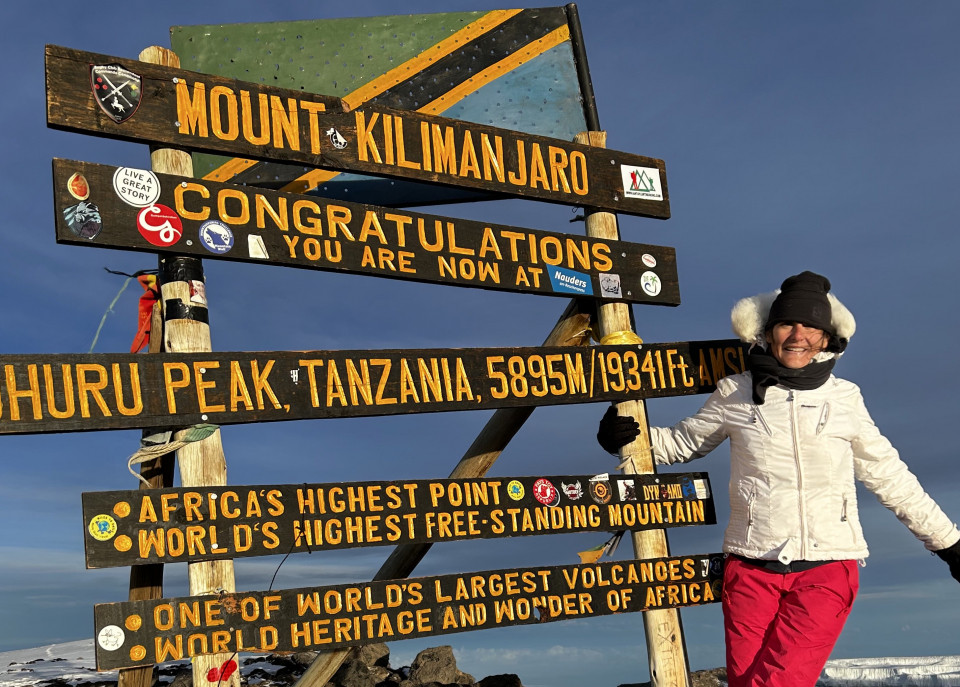
In late 2022, Florence Chevallier and her husband climbed to Uhuru, the summit of Kilimanjaro and Africa’s highest point. This was a personal adventure, but also a way to attract attention to and raise funds for the KEAF Foundation for underprivileged children in the Lebanon, created in honour of Krystel El Adm (E08), a victim of the Beirut port explosion in 2020. “We live in Dubai and wanted to support a local cause. The Lebanese crisis has a strong impact here.”
To train for the climb, Florence joined a local group of trekkers. “We would get up at 4am to head to the mountains to the north of the Emirates and clock up the kilometres and uphill climbs, in temperatures of up to 45°C. It was a great test of resistance!” She used the Alltrails application to improvise her own 5-hour treks anywhere her business travels took her. “I’ve also been doing gymnastics several times a week for years, which has made me very mobile and supple. I don’t injure easily.”
The mental aspect is just as decisive, however. “Nothing really prepares you for the altitude and lack of oxygen. You have to accept the idea of feeling ill for days, of getting up with a migraine and not panicking when you develop all sorts of worrying symptoms. You learn to go “pole, pole”, or “slowly, slowly” in Swahili. It’s a highly introspective experience which requires confidence and perseverance, for the last stage in particular. We set off at midnight for 16 hours of dizzyingly steep up- and downhill slopes, having already done several days of walking and acclimatisation.”
The couple finally raised $30,000 for the KEAF Foundation. “And we lost 5kg each!” Florence Chevallier also sees professional benefits to this expedition. “Taking on this type of challenge is an excellent way to inspire teams and affirm your leadership, to develop skills such as concentration and determination, and to learn to draw on the best of yourself. In other words, to identify the motivational triggers that will improve your performance and implication in work and effort.”
Thibaud Coudriou (E10), the cycling pro
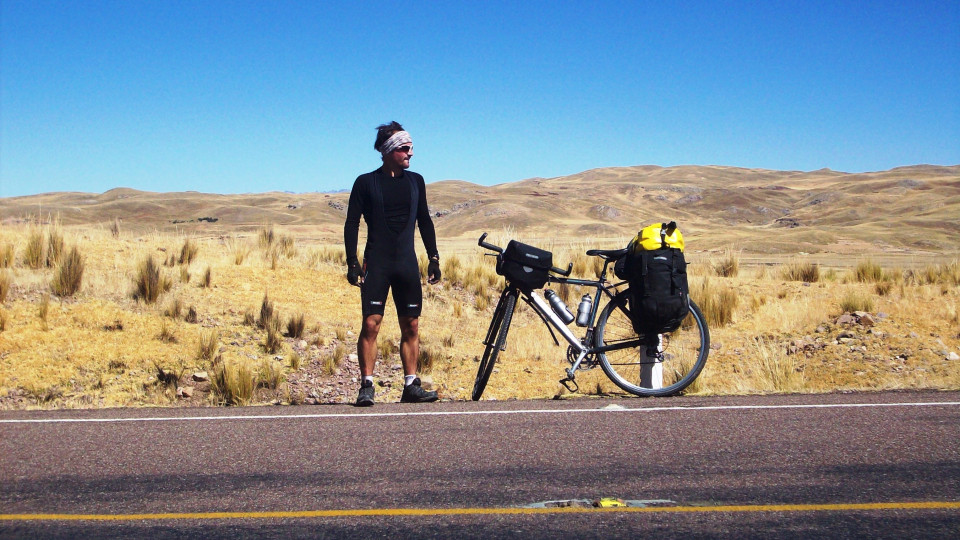
As of the age of 18, Thibaud Coudriou spent his holidays cycling around Europe. Sometimes with a partner, but often alone. “Paris-Nice, Paris-Berlin, Paris-Barcelona, Paris-Istanbul… I loved to take the back roads, with my face in the wind, emptying my mind and working my body. Exploring. Exploring my own limits and those of my world.”
Limits which he pushed further and further. He set off firstly for a month on the Karakorum Highway in the Himalayas, stretching from Kyrgyzstan to Pakistan via China, accompanied by Thibaut Dejean de la Batie (E10) on rollerblades (see the dedicated paragraph). He then explored the fjords of Norway with Anne Dardelet (E11). Lastly, on finishing his studies, he embarked, alone, on an even longer, more difficult route across Latin America. He cycled 8,000km in 10 weeks through Ecuador, Peru, Bolivia, Argentina and Chile. “As the weeks and the kilometres went by, while I was turned to the outside and the people I met along the way, another journey gradually began, deeper into myself, between introspection and plenitude. Was it due to the altitude, endorphins or the omnipresence of Catholicism in Latin America? Whatever the reason, spirituality became my unexpected travelling companion.”
Two more solo expeditions were to follow, a Paris-Palermo and a tour of the Moroccan Atlas, as well as a Paris-Santiago de Compostela with Olivier Eisenzimmer (E10), before he finally hung up his cycling shoes. Although not quite: “I no longer set off on expeditions, but I take part in cycling races, marathons, trails and crossfit challenges.”
Marianne Florea (BBA 12), crossing the deserts
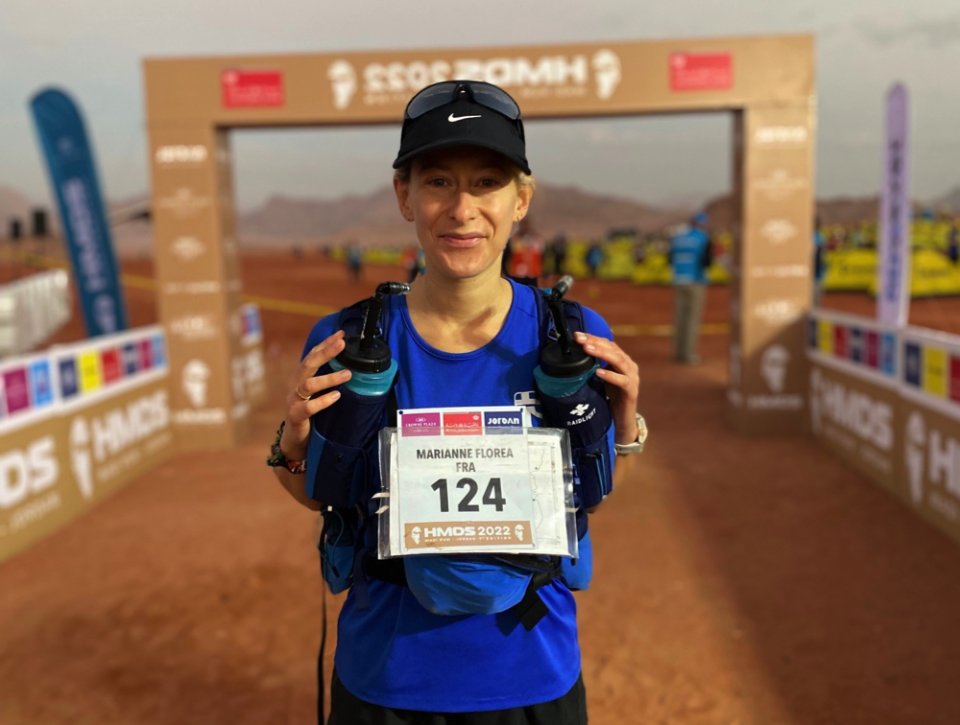 From her beginnings as a ‘Sunday Jogger’, Marianne Florea started training seriously as of 2021. She began with 5km road races and half-marathons, then progressed to the ultra level, firstly with the HMDS (Half Marathon Des Sables), a 120km race in 3 stages across the Wadi Rum desert in Jordan. “I finished third in the women’s category!” A year later she tackled the MDS (Marathon Des Sables), which literally doubled the difficulty, with a 250km trail in 5 stages across the Sahara. “You have to cope with sandstorms and temperatures which can reach 55°C, with a 6.5kg backpack that holds all your food for the duration of the competition (bags of rice, mainly), your sleeping bag, survival blanket and first aid items, etc.”. The race required physical training, running 100km to 150km a week, as well as logistic preparations. “For every item I needed to bring, I looked for the best quality-weight ratio. For my food, I calculated for around 16,000 calories in all, as well as 80g of carbohydrates per hour of running.” This reasoned, strategic approach was inspired by her job as a consultant. “For me, there is no performance without a goal. In my work, I always create a plan with milestones. For running, I schedule a specific number of training sessions and hours of sleep to reach a certain timing or ranking. I measure my progress regularly with KPIs.”
From her beginnings as a ‘Sunday Jogger’, Marianne Florea started training seriously as of 2021. She began with 5km road races and half-marathons, then progressed to the ultra level, firstly with the HMDS (Half Marathon Des Sables), a 120km race in 3 stages across the Wadi Rum desert in Jordan. “I finished third in the women’s category!” A year later she tackled the MDS (Marathon Des Sables), which literally doubled the difficulty, with a 250km trail in 5 stages across the Sahara. “You have to cope with sandstorms and temperatures which can reach 55°C, with a 6.5kg backpack that holds all your food for the duration of the competition (bags of rice, mainly), your sleeping bag, survival blanket and first aid items, etc.”. The race required physical training, running 100km to 150km a week, as well as logistic preparations. “For every item I needed to bring, I looked for the best quality-weight ratio. For my food, I calculated for around 16,000 calories in all, as well as 80g of carbohydrates per hour of running.” This reasoned, strategic approach was inspired by her job as a consultant. “For me, there is no performance without a goal. In my work, I always create a plan with milestones. For running, I schedule a specific number of training sessions and hours of sleep to reach a certain timing or ranking. I measure my progress regularly with KPIs.”
Thibaut Dejean de la Batie (E10), high-speed rollerblading
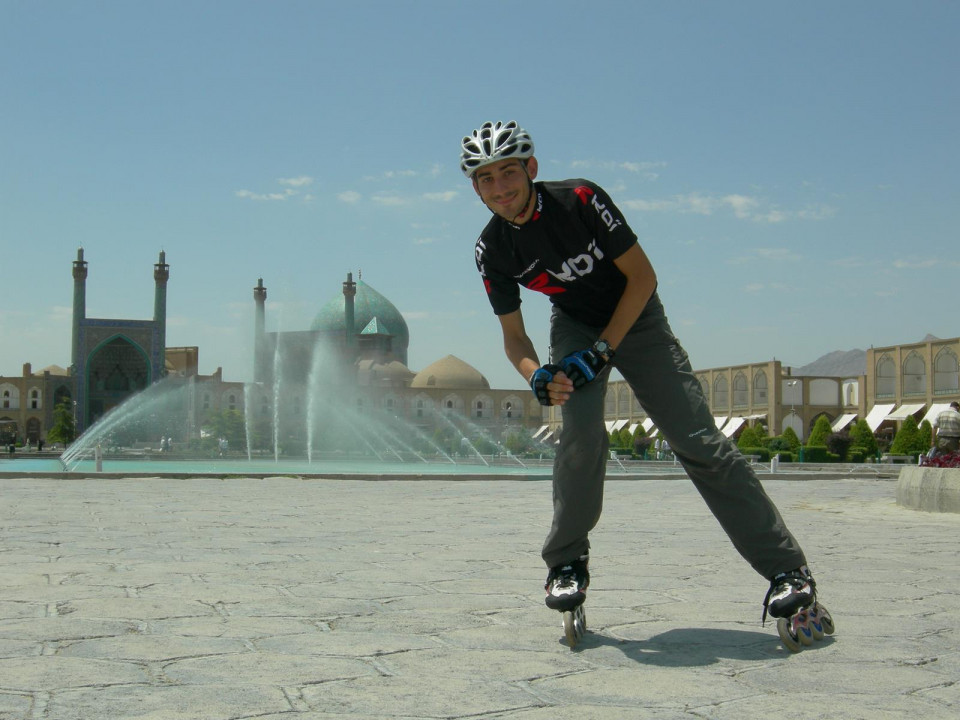 Thibaut Dejean de la Batie has been a keen endurance rollerblader for more than 20 years. He began with PUC Roller, a Parisian club which took him from the French capital to Chartres, Orleans, Giens or Dieppe, on training sessions of several hundred kilometres. He then entered the competition circuit and became a regular participant in the One Eleven, a 111km race in Switzerland, eventually coming in 2nd; the 24-hour Le Mans solo race, also coming in 2nd among some 150 racers and clocking up more than 550km, or the 6-hour Challenge du Centre. At the same time, he also developed a passion for rollerblade rallies, sometimes alternating with a mountain bike to reach the inaccessible areas. He thus crossed the Himalayas with Thibaud Coudriou (E10) (see dedicated paragraph), ascended Mont Ventoux, crossed the Alps from France to Italy, ventured into Iran’s deserts and explored the mountains of India...a true rolling stone.
Thibaut Dejean de la Batie has been a keen endurance rollerblader for more than 20 years. He began with PUC Roller, a Parisian club which took him from the French capital to Chartres, Orleans, Giens or Dieppe, on training sessions of several hundred kilometres. He then entered the competition circuit and became a regular participant in the One Eleven, a 111km race in Switzerland, eventually coming in 2nd; the 24-hour Le Mans solo race, also coming in 2nd among some 150 racers and clocking up more than 550km, or the 6-hour Challenge du Centre. At the same time, he also developed a passion for rollerblade rallies, sometimes alternating with a mountain bike to reach the inaccessible areas. He thus crossed the Himalayas with Thibaud Coudriou (E10) (see dedicated paragraph), ascended Mont Ventoux, crossed the Alps from France to Italy, ventured into Iran’s deserts and explored the mountains of India...a true rolling stone.
Thomas Legrain (E96), extreme endurance
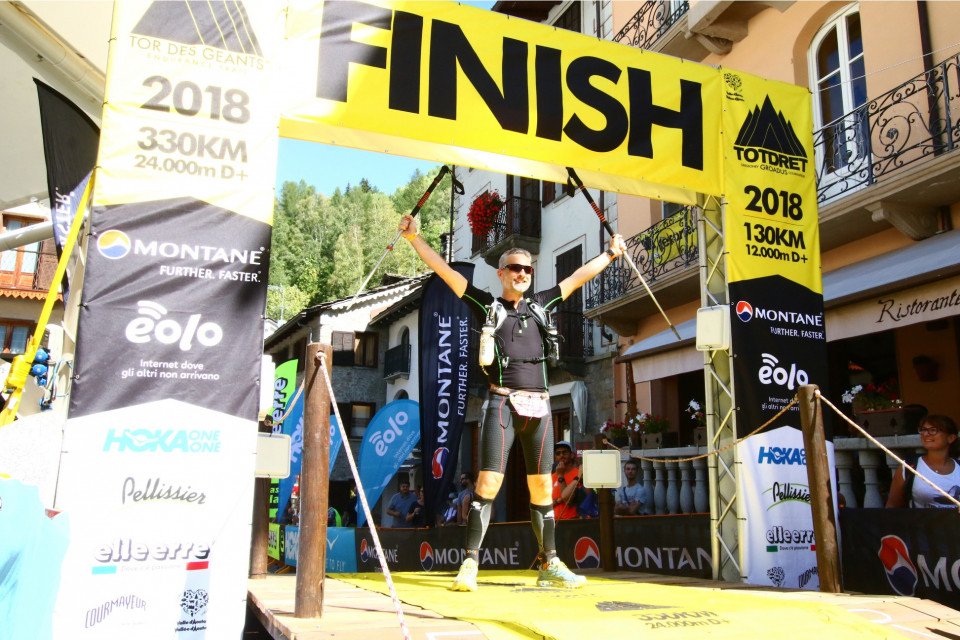
A fan of ultra trail, Thomas Legrain’s exploits include the UTMB, the Diagonale des Fous, the Marathon des Sables, Ultra-Marin, Ultra 6000D, the Endurance Trail, the Ardennes Mega Trail, Grand Raid 6666, Fusion Race, Spince Race and the Tor des Géants. This last experience was particularly memorable. “You have 340km to run, including 31,000 metres uphill and as many downhill; in other words, almost the equivalent of climbing up and down Everest four times. This single-stage, non-stop race takes you across the highest mountains in Europe: Mount Blanc, Monte Rosa, the Matterhorn, the Grandes Murailles and the Dent d’Hérens, the Grand Combin, the Grandes Jorasses and the Gran Paradiso. There are many dangers along the way, including harsh weather conditions (icy cold, black dark night, gusts of wind, sleet, thunder and lightning), steep slopes, lack of sleep and hallucinations. I had to train for 3 years and learn to survive for 6 days on 30 minutes sleep every 24 hours.”
An unforgettable adventure, which also satisfied his other extreme passion for high mountain tops. “I climbed Mount Blanc (4,807 m), Kilimanjaro (5,895m – in 48 hours!) and the Aconcagua (6,962 m) for my 50th birthday. The sky is the limit, as they say!”
Marion Faucher-Peres (E09) and Maïa Courjaret (M09), rally addicts
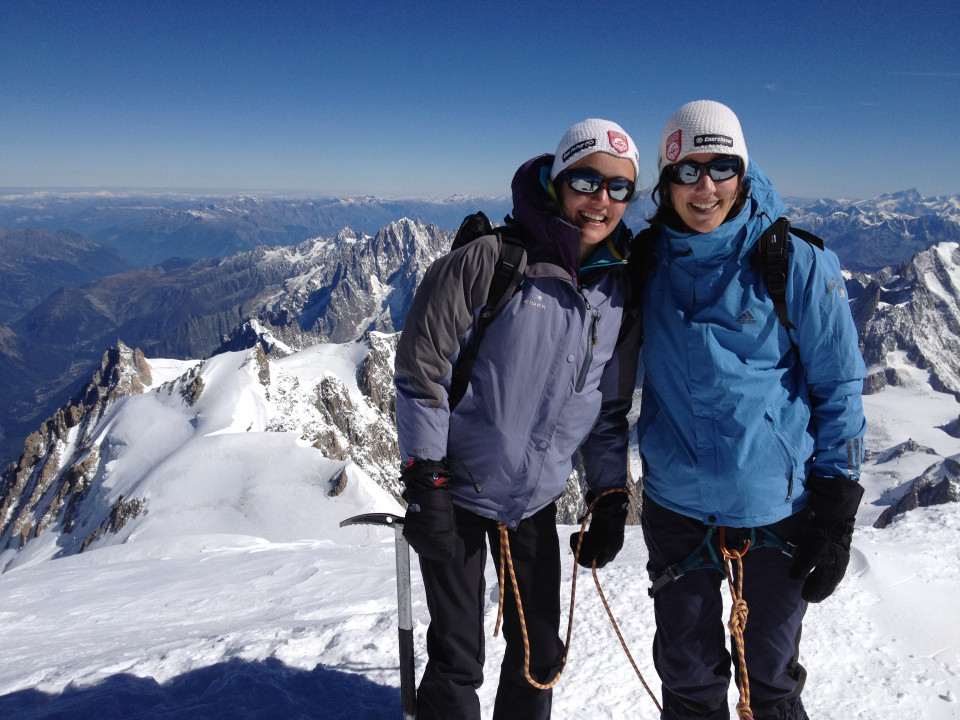 Their passion for sport brought them together; competitive running for Marion Faucher and Golf Index 2 for Maïa Courjaret, 2014 French individual champion. Their first challenge as a duo was to climb Mount Blanc in 2021. “We reached our goal after 20 hours of unforgettable effort...we were hardly down off the mountain before wanting to start again.” They thus entered the Raid Amazones Arbre Vert in 2013, an all-female multi-sport adventure rally which includes 6 days of canoeing, mountain biking and running, in teams of three. “We were delighted to come in 11th out of 88 teams!” They continue to share 2- to 4-day mini outdoor adventures each year, such as orienteering races, parachuting, a trek along the volcanoes of Cantal in snowshoes, or sleighing across the Auvergne with nights at -6°C in a tent. “In everyday life, these challenges help us to maintain a real balance with our careers, to leave our comfort zones and draw deep on our resources thanks to the additional strength team work has brought us. We know ourselves and each other better.”
Their passion for sport brought them together; competitive running for Marion Faucher and Golf Index 2 for Maïa Courjaret, 2014 French individual champion. Their first challenge as a duo was to climb Mount Blanc in 2021. “We reached our goal after 20 hours of unforgettable effort...we were hardly down off the mountain before wanting to start again.” They thus entered the Raid Amazones Arbre Vert in 2013, an all-female multi-sport adventure rally which includes 6 days of canoeing, mountain biking and running, in teams of three. “We were delighted to come in 11th out of 88 teams!” They continue to share 2- to 4-day mini outdoor adventures each year, such as orienteering races, parachuting, a trek along the volcanoes of Cantal in snowshoes, or sleighing across the Auvergne with nights at -6°C in a tent. “In everyday life, these challenges help us to maintain a real balance with our careers, to leave our comfort zones and draw deep on our resources thanks to the additional strength team work has brought us. We know ourselves and each other better.”
Jean-Luc Ayme (E91), from the Annecy marathon to the Ventoux Trail
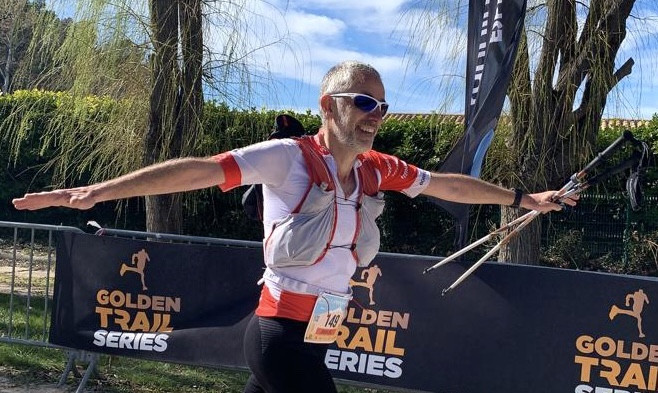
An experienced runner of many years, Jean-Luc Ayme entered his first marathon in Annecy, in 2016. “My performance in 3 hours and 25 minutes was perfectly acceptable, given the apocalyptic conditions with gale force winds and driving rain...”. Far from discouraged by this experience, he decided to try a trail. The two sports are actually very different. “Marathon running requires a fairly steady ‘target’ speed. Trail, on the other hand, demands dosing your effort according to the terrain, slope and sensations.”
While it is possible to join a club or hire a coach to train, Jean-Luc Ayme created his own physical programme gleaned from ideas on internet. “Contrary to what many people recommend, I’m incapable of maintaining a pace of 4 to 5 sessions per week. I don’t have the time, and after several injuries, I know my body’s limits. I therefore stuck to 2 or 3 outings in the heart of the Luberon countryside, where I’m lucky enough to live.” The most important thing for Jean-Luc was to enjoy himself. “I’ll never be a world champion, so I might as well have fun!”
This hasn’t stopped him from entering very challenging competitions. “I recently entered the Ventoux Trail, a legendary 46km race with 2,400 metres uphill, made even more difficult by a trail which leads from a plateau at 20°C to the snow-covered mountain top. Added to that is the Mistral with gusts of over 100kph!” Despite two falls and cramps on the way down, he crossed the finishing line in 6 hours and 9 minutes, earning 16th place in his category. He attributes this good result to his mental strength above all. “You mustn’t aim for performance, for constant optimisation at all costs. That works for sprinting, but not for long-distance running. In the same way, a company can’t simply bank on maximising results in the very short term. That’s my belief, at least. In any sector, you need to work in the long term, accept to progress gradually and demonstrate endurance.”
Cédric Leclercq (E22) staying the distance
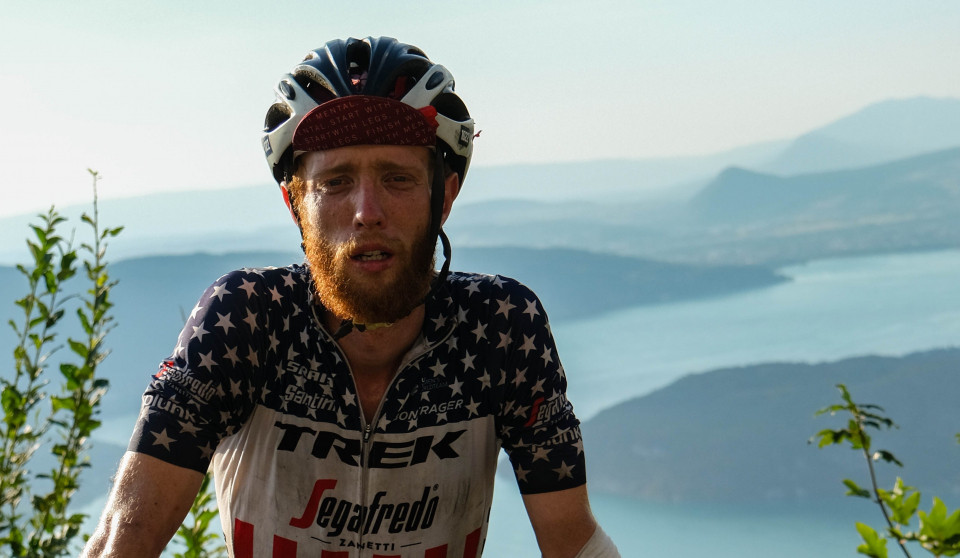
Cédric Leclercq recently completed the Nice Ironman. “3.8km of swimming, 170km by bicycle and a marathon in 11 hours and 20 minutes! I came in 275th out of 2,500 participants.” A result earned through an average of 15 hours’ training per week in the 4 months running up to the race. “I’ve often been asked how I managed to tire so little despite all that physical activity. I think that energy comes from rigorous preparation which also includes a balanced diet and no alcohol.” He draws a wider conclusion: “When you do sport on a regular basis, you become much more productive and strengthen your mental capacity to focus on your work.”
This healthy lifestyle extends to his advocacy for decarbonised mobility. “While I was at ESSEC, I travelled from Cergy to Helsinki for my university exchange by bicycle. That 6,700km adventure took me through 8 countries in 55 days, in conditions which were sometimes difficult, such as 80km per day on average in the Norwegian mountains, compared to 200km on the flat roads of Germany!” He repeated the experience a year later to join the classmates he had met during his first stay. “Another memorable journey which took us through 11 countries and the heart of majestic mountains such as the Dolomites and the Slovenian Alps, along Europe’s great rivers and via some of the continent’s most beautiful cities, including Milan, Vienna and Munich.”
Interview by Louis Armengaud Wurmser (E10), Content Manager at ESSEC Alumni
Do you want more quality content about the ESSEC community? Join us now!

Comments0
Please log in to see or add a comment
Suggested Articles



